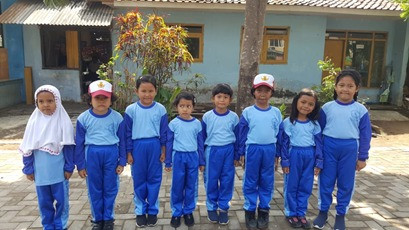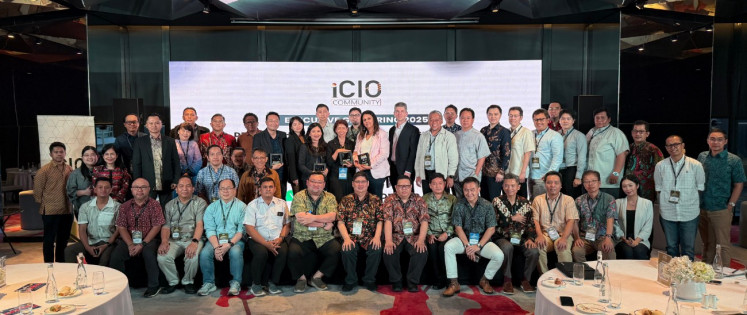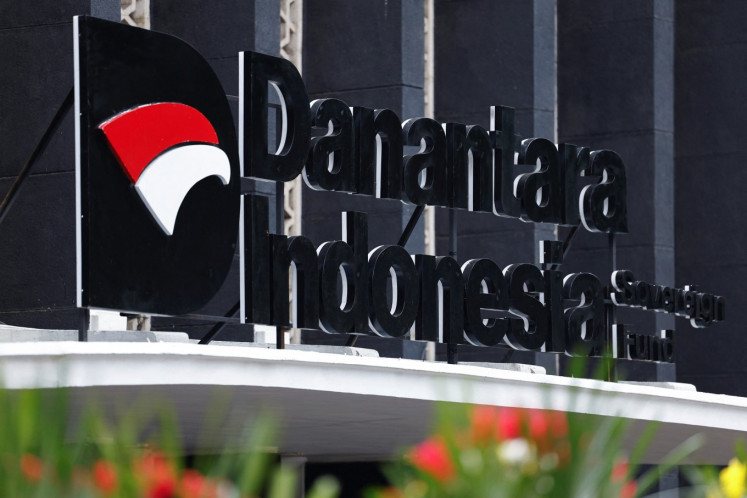Popular Reads
Top Results
Can't find what you're looking for?
View all search resultsPopular Reads
Top Results
Can't find what you're looking for?
View all search resultsCoping with micronutrient deficiencies amid COVID-19
Change text size
Gift Premium Articles
to Anyone
M
icronutrient deficiencies, which can lead to stunting, have once again become a critical issue that needs to be addressed in Indonesia due to the rising poverty brought about by the prolonged COVID-19 pandemic.
The health crisis and ensuing physical restrictions have dragged down Indonesian economic activity, with millions of people losing their jobs.
Increasingly weak purchasing power, caused largely by increased unemployment, has had an effect on the quality of diets, which could potentially reduce immunity to various diseases, especially infectious diseases, which interfere with growth and physical and mental development, preventing people from reaching their developmental potential.
At the household level, the health crisis has resulted in nutritional insecurity, which leads to malnutrition, especially micronutrient malnutrition, such as in iron, vitamin A and zinc, globally known as ‘hidden hunger’.
‘Hidden hunger’ is mostly suffered by the poor as they consume fewer fruits, vegetables and foods that are rich in vitamins and minerals. Most social and economic surveys have shown that the poor households spend most of their income on rice and other staple foods with high calorie densities – and less on protein and vitamin and mineral laden foods such as meat, fish, fruits and vegetables. Their diets are low in variety and variability.
A 2020 survey by Save the Children Indonesia found that reduced child welfare due to parental loss of income, as well as limited support for children with disabilities, could increase the risk of malnutrition in 24 million toddlers across the country.
Unless concrete steps to combat malnutrition are taken, the number of wasted and stunted children will really go up, which could hamper Indonesia’s endeavors to reduce stunting under the Indonesian National Strategy or the Acceleration of Stunting Prevention 2018-2024.
The government still has three years left to achieve the target of reducing the prevalence of stunting to 14 percent by 2024. The prevention of stunting is one of the most important development agenda items in the National Medium-Term Development Plan (RJMN) 2015-2019 and 2020-2024.
Aware of the serious threat of malnutrition to the wellbeing of children and the development of human resources in Indonesia, the Indonesian Foundation for the Development of Food Fortification (KFI) and the Indonesian Nutrition Institute (IGI) think it necessary to intervene in coping with micronutrient deficiencies.
This explains why the KFI and IGI, in collaboration with Vitamin Angels and the Global Alliance for Improved Nutrition (GAIN), recently organized a virtual international workshop themed “Combating Malnutrition amid the Pandemic”.
To deal with micronutrient malnutrition, Indonesia adopts both non-food and food approaches.
According to the KFI, the non-food approach provides certain vitamin and mineral capsules or tablets for certain target groups. Like in other countries, Indonesia carries out a high-dose vitamin A capsule program for children under 5 twice per year through Community Health Centers (Puskesmas) and Integrated Health Posts (Posyandu).
“In addition, we also provide mandatory Iron Folic Acid (IFA) supplements for pregnant women throughout the pregnancy period and for adolescent girls as the reproductive age group,” it said.
Apart from mandatory programs, several local governments have implemented IFA supplementation for adolescent girls to prepare them for their reproductive period, KFI said.
Based on rigorous research, the WHO Steering Group Guidelines in April 2019 highly recommend the provision of micronutrient supplementation (MMS) during pregnancy.
The recommended MMS is the UNIMMAP formulation, containing 15 micronutrients. Countries across Asia and Africa, including Indonesia, are working on the recommendation to improve the policy from providing iron-folic acid supplementation (IFAS) to MMS.
Meanwhile, the food approach is conducted by providing nutritious food supplements, especially for pregnant women and under-five children, and mandatory government food fortification and biofortification, especially for the poor who are vulnerable to micronutrient malnutrition.
According to the IGI, food fortification and biofortification, or biological fortification, are components of the national nutrition program to improve the nutrition status of the poor. Biofortification refers to nutritionally enhanced food crops with increased bioavailability to the human population using biotechnology techniques, conventional plant breeding and agronomic practices.
Food Fortification
The workshop highlighted the importance of food fortification, a technology of enriching food with certain vitamins and minerals, to prevent micronutrient malnutrition. Vehicles for fortification include salt, wheat, rice and palm-based cooking oil. Historically, mandatory food fortification in Indonesia was started by the Dutch government in 1927 through mandatory iodized salt fortification, seven years after fortification technology was first developed in the US and Switzerland in the form of salt fortification with iodine.
This fortification intended to cure goiter, a form of iodine deficiency disease (IDD) mostly suffered by poor pregnant women in rural and isolated areas. Goiter has detrimental effects on the growth and brain development of fetuses and infants that can lead to stunting. A salt fortification law was enacted in Indonesia in 1994.
In the 20th century, all countries in the world enacted mandatory salt fortification to protect the poor who could not afford to buy diversified foods that were rich in vitamins and minerals, including iodine.
Today, wheat flour fortification, initiated in 1942 in the US, is carried out in more than 85 developed and developing countries, including Indonesia, which has been implementing the policy since 2001.
“Unfortunately, wheat flour fortification in Indonesia has not shown significant improvement in reducing anemia due to some improper formulas for the micronutrients added to the flour. This has been corrected with a new formula in the coming products, starting in 2021,” the KFI said.
Rice biofortification is currently being developed and cultivated in Indonesia and several countries in Asia and Africa.
In addition, Indonesia developed and scaled up the fortification of cooking palm oil with vitamin A from 2010 to 2015 to cope with vitamin A deficiency among children under 5 in rural and poor communities, under the management of the KFI and several government and nongovernment agencies in a public-private partnership.
According to the IGI, the project successfully fortified about 60 percent of domestically produced palm-based cooking oil.
Studies published in several international journals showed that palm cooking oil fortification was effective at reducing the prevalence of vitamin A deficiency of children under 5 in rural and poor communities.
To combat micronutrient deficiencies and “hidden hunger” that can lead to stunting, the world has agreed that mandatory fortification has been proven globally as the breakthrough and “smart” effort in preventing micronutrient malnutrition, particularly for the poor.










